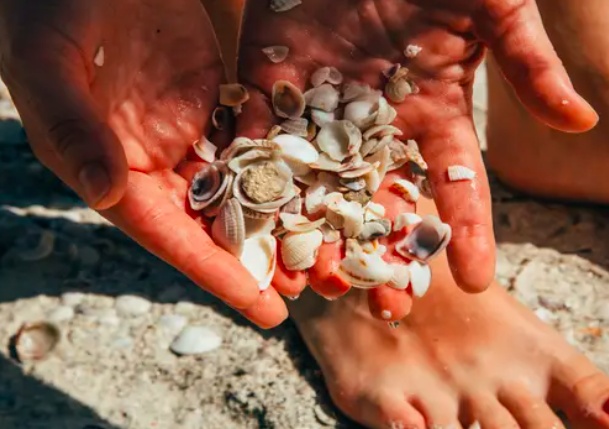Inspired by Seashells, Researchers Boost Performance and Slash Costs of Recycled Plastic Packaging
On August 14, Zhuanshu Vision reported that researchers at Georgia Tech have successfully developed a new shell-inspired material. This breakthrough is expected to revolutionize the application of recycled plastics, endowing them with greater strength and stability while significantly reducing production costs.
This groundbreaking research is led by Assistant Professor of Aerospace Engineering Christos Athanasiou. The achievement is expected not only to reduce the cost of native packaging materials by nearly 50% but also significantly reduce landfill waste, which is of great significance for environmental protection.
Currently, plastic pollution is a severe problem. Every year, global plastic production reaches as much as 350 million tons, but less than 10% of it is effectively recycled. Even after recycling, the resulting recycled plastic materials often fail to meet the requirements of high-performance applications, which has become a major challenge in the field of plastic recycling and utilization.
In the traditional mechanical recycling process, plastics are melted and mixed together, forming a composition that is difficult to predict. This randomness in mixing leads to reduced strength and reliability of the recycled plastics, making them unsuitable for critical applications such as automotive parts and building components that require high material performance.
In stark contrast, although shells do not have perfect structures, they exhibit remarkable strength and toughness. The structure of a shell is known as nacre, consisting of brittle mineral "bricks" and soft protein "mortar" bonded together. This unique structure can effectively dissipate energy and prevent catastrophic failure, achieving high strength even if the material itself is not pure and flawless. Inspired by this natural strategy of shells, Athanasiou's team designed a synthetic composite material.

The research team selected recycled high-density polyethylene (HDPE) as the experimental material, a transparent stretch film commonly used for wrapping palletized goods. They cut this stretch film into thin sheets to serve as "bricks," which were then layered with a softer adhesive polymer "mortar," mimicking the structure of nacre.
When testing this biomimetic material on a custom mechanical device, results showed that it not only maintained the performance level of the native plastic but also reduced the variability of a key performance indicator—the maximum elongation—by more than 68%. Additionally, the researchers developed an "uncertainty-aware" tension-shear chain model capable of quantitatively analyzing the strength and performance reliability of the material.
Usually, after recycling, HDPE stretch film cannot be reused for its original purpose because exposure to sunlight, high temperatures, and stress alters its molecular structure. Asanacio vividly compared this to "reusing a parachute without checking for cracks." However, this new material, inspired by seashells, restores the reliability of recycled plastics, opening up broad prospects for their reuse in high-performance applications.
Although the study primarily focuses on the field of plastics, it is closely related to the aerospace sector. Space systems demand extremely high reliability from materials, requiring stable performance in extreme environments. In the future, this principle is expected to be applied to NASA's "Lunar Reutilization Challenge," converting waste materials into survival infrastructure, thus providing strong support for space exploration.
The research team next plans to extend this method to other types of plastics, combine it with more environmentally friendly adhesives, and explore its potential applications in extraterrestrial construction. This suggests that the perfect mechanisms formed through long evolution in the ocean by nature may offer innovative solutions to waste problems on Earth and even in space.
Asanathio stated: "Whether it's reusable rocket components or shelters on Mars, we need resilient materials throughout the entire lifecycle. Our research addresses a fundamental mechanical problem: how can we build reliable structures using unreliable materials?"
The team is currently applying this method to other recycled plastics and attempting to use bio-based adhesives to enhance sustainability. Asanathio added, "Nature does not seek purity but focuses on organization. We apply this concept to an issue that affects the future of Earth and space exploration."
The research findings have been published in the Proceedings of the National Academy of Sciences.
【Copyright and Disclaimer】The above information is collected and organized by PlastMatch. The copyright belongs to the original author. This article is reprinted for the purpose of providing more information, and it does not imply that PlastMatch endorses the views expressed in the article or guarantees its accuracy. If there are any errors in the source attribution or if your legitimate rights have been infringed, please contact us, and we will promptly correct or remove the content. If other media, websites, or individuals use the aforementioned content, they must clearly indicate the original source and origin of the work and assume legal responsibility on their own.
Most Popular
-

EVA Morning Prices on September 12: Most of the Market Holds Steady, Highest Rise of 50 Yuan
-

[PET Weekly Outlook] Polyester Bottle Chips Expected to Oscillate and Warm Up with Costs Today
-

List Released! Mexico Announces 50% Tariff On 1,371 China Product Categories
-

EU Changes ELV Regulation Again: Recycled Plastic Content Dispute and Exclusion of Bio-Based Plastics
-

Case Study | Clariant AddWorks™ Additives Solve Plastic Yellowing Problem






